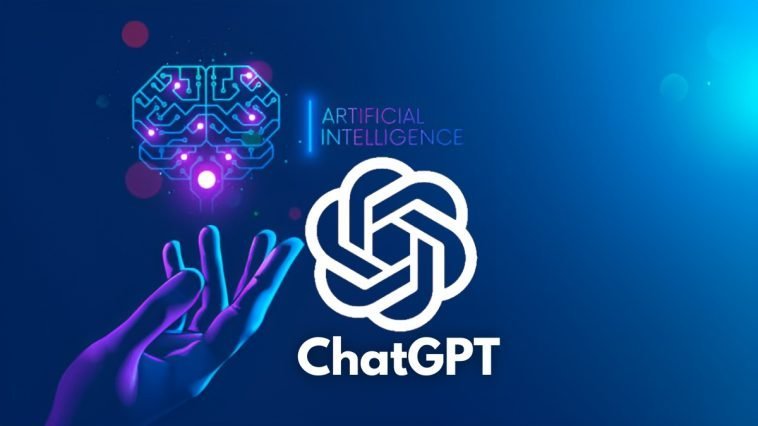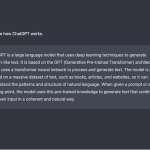Introduction.
Writing a story is a creative endeavour that allows you to explore new worlds, craft compelling characters, and engage your readers in an immersive experience.
With the advent of artificial intelligence, specifically language models like ChatGPT, you now have a powerful tool at your disposal to enhance your storytelling process.
ChatGPT, developed by OpenAI, is a state-of-the-art language model trained on vast amounts of text, enabling it to generate human-like responses and carry on interactive conversations.
In this guide, we will explore how you can leverage the capabilities of ChatGPT to write a story that captivates your readers.
How Do I Write a Story With ChatGPT?
Writing a story is a deeply personal and creative endeavour, but it doesn’t have to be a solitary one.
With the emergence of advanced language models like ChatGPT, you now have the opportunity to collaborate with artificial intelligence to enhance your storytelling process.
ChatGPT, developed by OpenAI, is a state-of-the-art language model trained on vast amounts of text, capable of generating human-like responses and engaging in interactive conversations.
In this article, we will explore practical steps on how to effectively write a story with the help of ChatGPT.
1. Getting Started with ChatGPT.
To begin your storytelling journey with ChatGPT, you’ll need access to the model. OpenAI provides an interface where you can interact with the model through prompts and receive its responses.
Take some time to familiarize yourself with the interface and experiment with different prompts to understand how the model generates its outputs.
2. Brainstorming and Idea Generation.
ChatGPT can be an excellent tool for brainstorming and generating ideas. Start by providing the model with a general prompt related to the genre, theme, or concept of your story.
For example, you can ask, “Can you suggest some unique fantasy world ideas?” or “What are some intriguing character backstories?”
The model will respond with imaginative suggestions that can inspire you and fuel your creativity.
3. Developing Engaging Characters.
Compelling characters are at the heart of any great story. Use ChatGPT to delve deeper into your character’s psyche, backstory, motivations, and relationships.
You can ask the model questions like, “What drives my protagonist’s actions?” or “How can I make my antagonist more complex?”
The model’s responses can help you uncover new layers and dimensions for your characters.
4. World-Building and Setting Creation.
Whether you’re writing a science fiction epic or a historical romance, the setting of your story plays a crucial role in immersing readers.
Collaborate with ChatGPT to flesh out your world by asking questions like, “What are some unique features of a futuristic city?” or “How can I make my fantasy realm more vibrant and immersive?”
The model’s suggestions can help you expand your world-building efforts and make your setting come alive.
5. Plot Construction and Story Arc.
ChatGPT can assist in shaping your story’s plot and narrative structure. Discuss key plot points, twists, and conflicts with the model, seeking its input on how to build tension and create compelling story arcs.
For example, ask, “What are some unexpected plot twists for my mystery novel?” or “How can I raise the stakes in my adventure story?”
The model’s responses can spark new ideas and guide you in crafting an engaging storyline.
6. Refining Your Narrative.
As you progress in your writing, ChatGPT can serve as a valuable sounding board for your ideas.
Share excerpts or summaries of your story and seek the model’s feedback on pacing, dialogue, or character development.
Ask questions like, “Does this dialogue feel natural?” or “Is the pacing of my action scene effective?” The model’s insights can provide a fresh perspective and help you refine your narrative.
7. Balancing AI Assistance with Your Creativity.
While ChatGPT can be an invaluable tool, it’s essential to strike a balance between using its assistance and relying on your creative instincts.
Remember that you are the author and ultimately responsible for the artistic direction of your story.
Use ChatGPT as a collaborative partner, leveraging its capabilities to enhance your writing rather than replacing your unique voice and imagination.
8. Overcoming Challenges and Limitations.
It’s important to recognize that ChatGPT has certain limitations. It may generate responses that are creative but not always coherent or contextually accurate.
If you encounter confusing or off-topic responses, try rephrasing your questions or prompts to guide the model in a more specific direction. Experimentation and iteration are key to achieving the desired results.
9. Iteration and Feedback.
Writing is an iterative process, and involving others in your journey can greatly benefit your story’s development.
Share your work with trusted friends, fellow writers, or writing communities, and seek their feedback. They can provide fresh perspectives, identify areas for improvement, and help you refine your storytelling approach.
Combine the insights gained from both human feedback and ChatGPT’s assistance to polish your story and make it the best it can be.
10. Editing and Finalizing.
Once you have completed a draft of your story with ChatGPT’s collaboration, it’s time to enter the editing phase. Review your narrative for coherence, consistency, and pacing.
Pay attention to grammar, punctuation, and style. While ChatGPT can offer suggestions and feedback on these aspects, it’s always recommended to rely on professional editing and proofreading techniques to ensure a polished final product.
11. Embrace the Journey.
Writing a story with ChatGPT is an exciting and evolving process. Embrace the opportunities that arise from collaborating with AI and appreciate the potential it brings to your creative endeavours.
Keep an open mind, experiment, and explore how ChatGPT can inspire and support your storytelling.
Remember, the ultimate goal is to create a captivating story that resonates with your readers.
Hey there, dear reader! We hope you’re enjoying the content on our blog. Did you know we have a treasure trove of other insightful articles waiting for you?
Check out the links to the article below to become more productive with ChatGPT.
- How To Start a YouTube Channel With ChatGPT
- How To Start a Blog With ChatGPT
- How To Start an Online Business With ChatGPT
- How To Make Money Online With ChatGPT [UPDATED]
- How To Start an Affiliate Marketing Business With ChatGPT
- How To Become a Freelancer With ChatGPT
- How To Start an eCommerce Business With ChatGPT
- How To Make Money On Fiverr With ChatGPT
- How To Grow Your Twitter Followers With ChatGPT [UPDATED]
- How To Grow Your Instagram Followers With ChatGPT [UPDATED]
- How To Start a Faceless YouTube Channel With ChatGPT
- How To Use ChatGPT For Email Marketing
- How To Make Money With ChatGPT With Zero Money
- How To Start a Business Using ChatGPT
- How To Use ChatGPT For Freelancing
- How To Make Money On Upwork Using ChatGPT
Conclusion.
Writing a story with ChatGPT is an innovative way to leverage artificial intelligence in your creative process.
By utilizing the model’s capabilities for brainstorming, character development, plot construction, and refining your narrative, you can enhance your storytelling skills and craft compelling stories.
However, it’s important to navigate the limitations and challenges associated with AI, such as bias and coherence issues.
By maintaining your creative autonomy, seeking feedback, and embracing the iterative nature of writing, you can harness the power of ChatGPT to create captivating stories that leave a lasting impact on your readers.
Hey there, dear reader! We hope you’re enjoying the content on our blog. Did you know we have a treasure trove of other insightful articles waiting for you?
Check out the links to the article below to become more productive with ChatGPT.
- How To Start a YouTube Channel With ChatGPT
- How To Start a Blog With ChatGPT
- How To Start an Online Business With ChatGPT
- How To Make Money Online With ChatGPT [UPDATED]
- How To Start an Affiliate Marketing Business With ChatGPT
- How To Become a Freelancer With ChatGPT
- How To Start an eCommerce Business With ChatGPT
- How To Make Money On Fiverr With ChatGPT
- How To Grow Your Twitter Followers With ChatGPT [UPDATED]
- How To Grow Your Instagram Followers With ChatGPT [UPDATED]
- How To Start a Faceless YouTube Channel With ChatGPT
- How To Use ChatGPT For Email Marketing
- How To Make Money With ChatGPT With Zero Money
- How To Start a Business Using ChatGPT
- How To Use ChatGPT For Freelancing
- How To Make Money On Upwork Using ChatGPT






GIPHY App Key not set. Please check settings